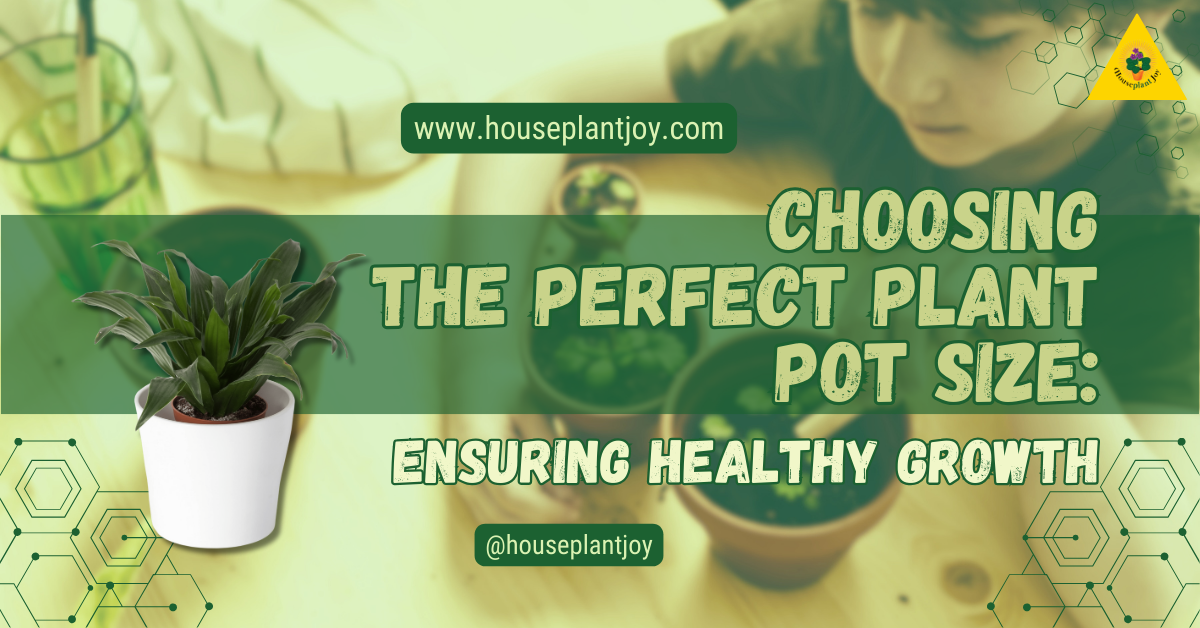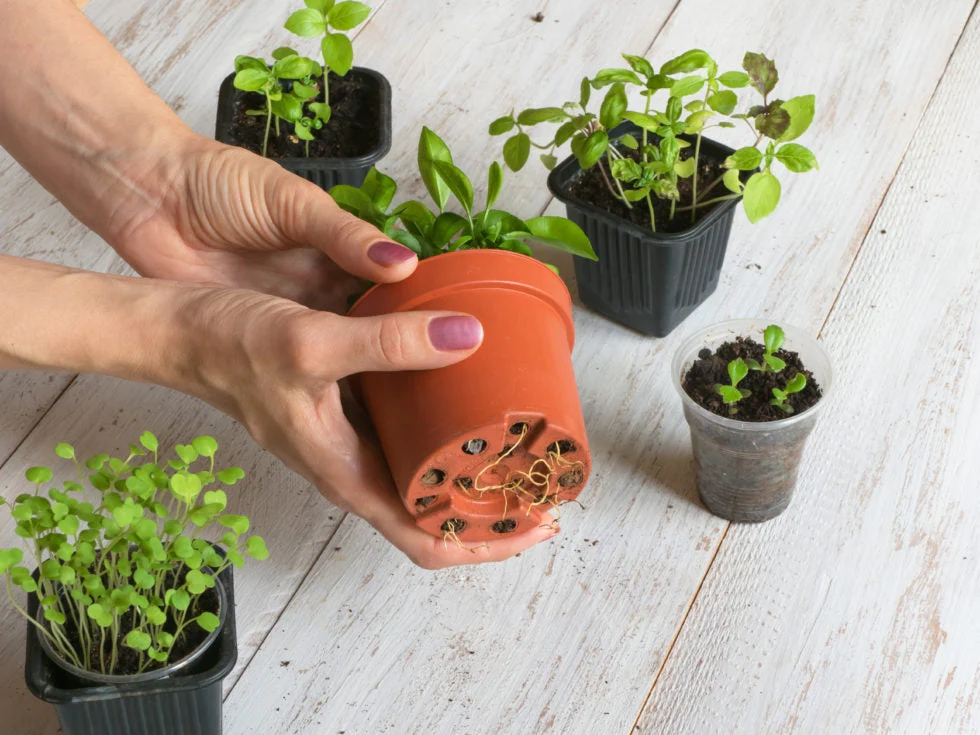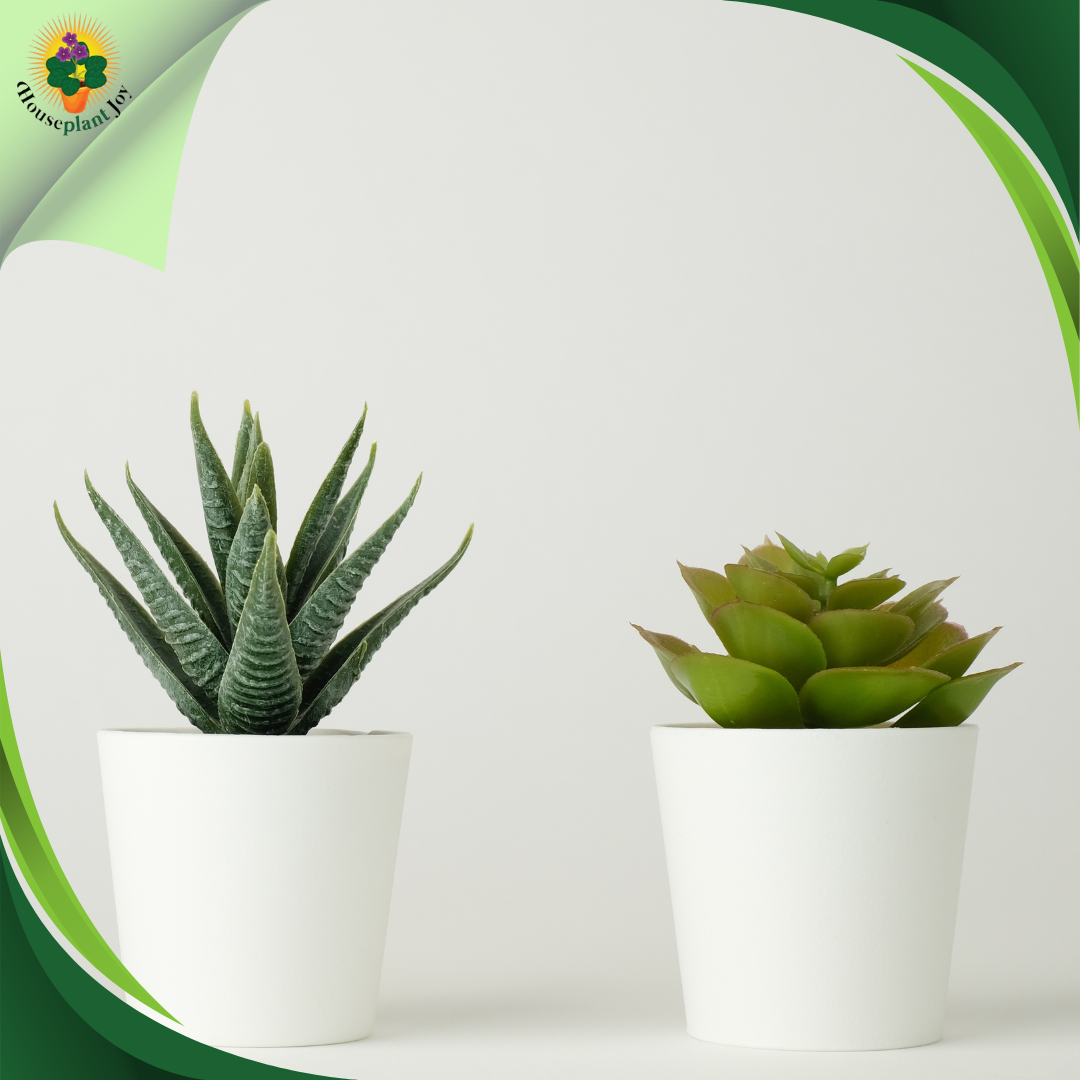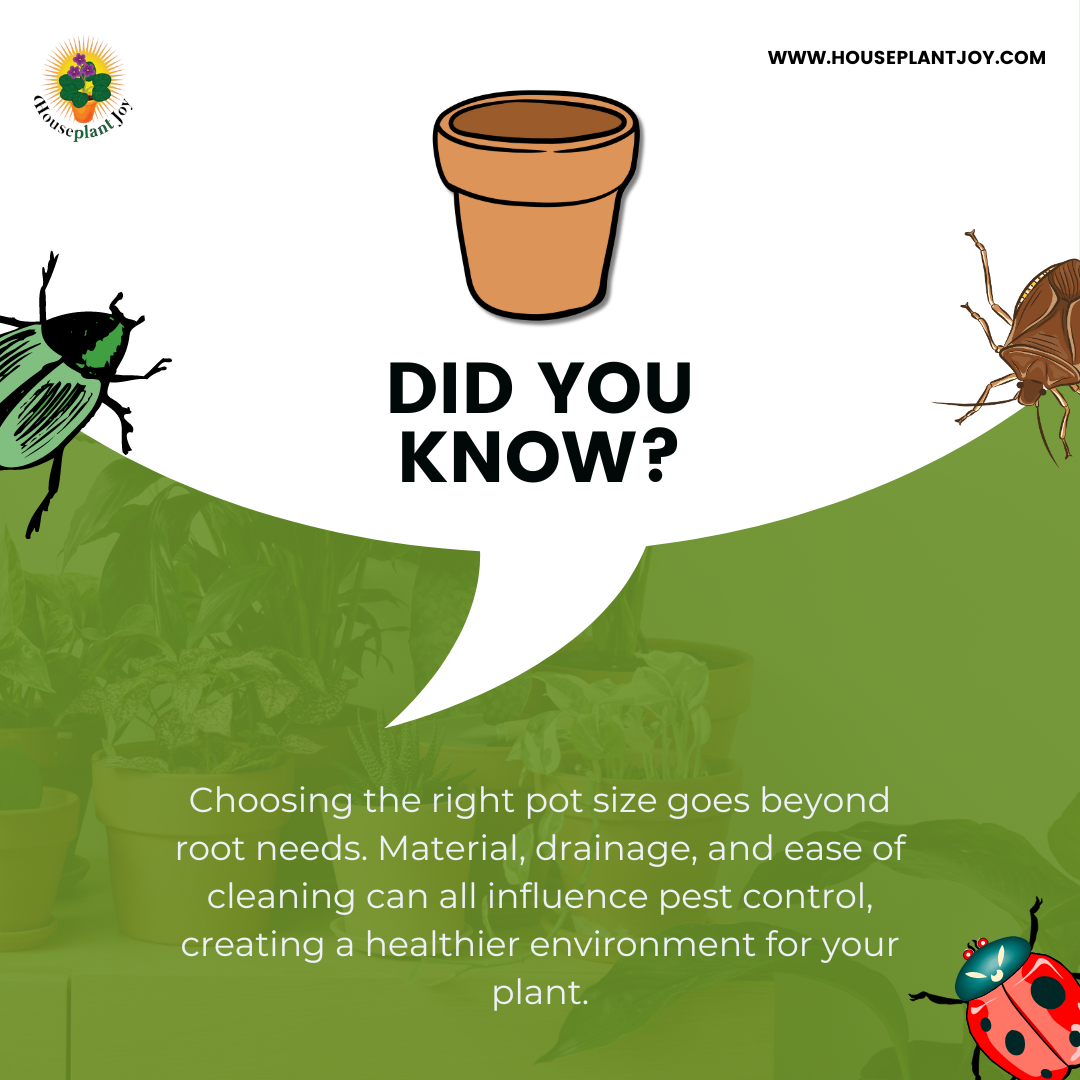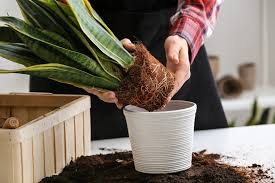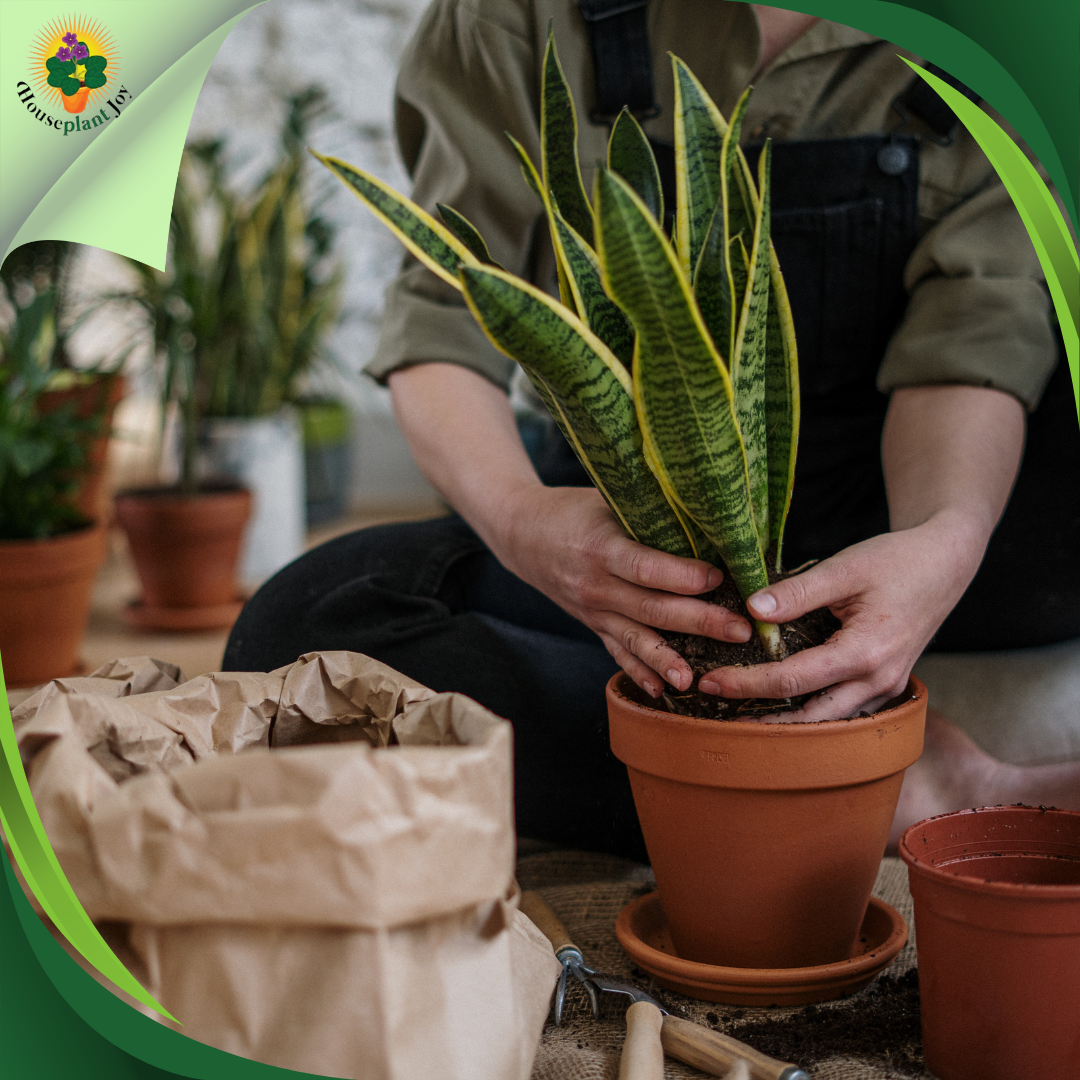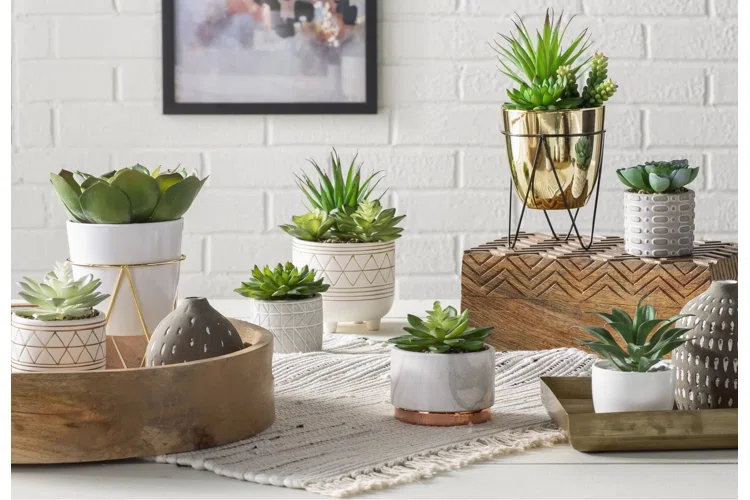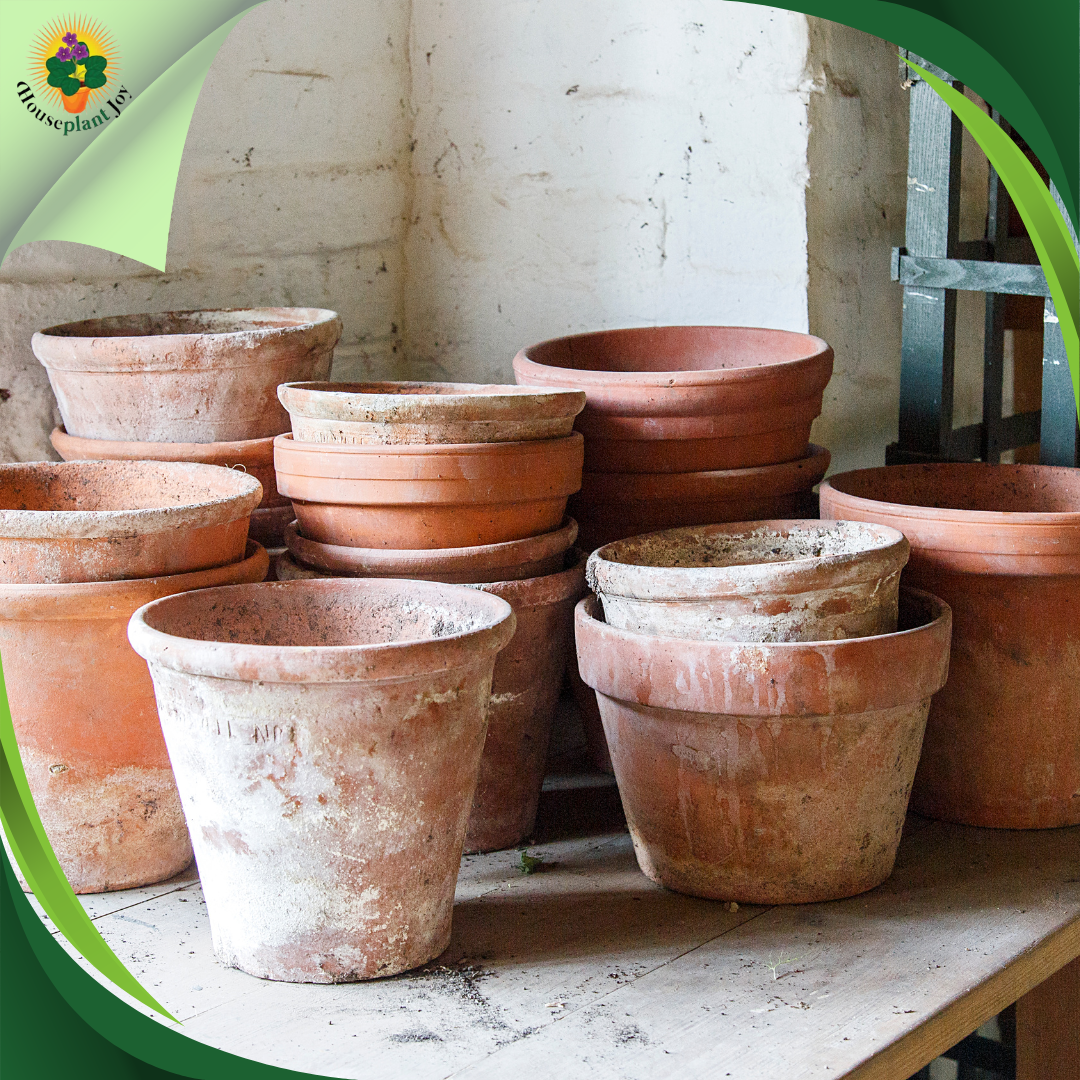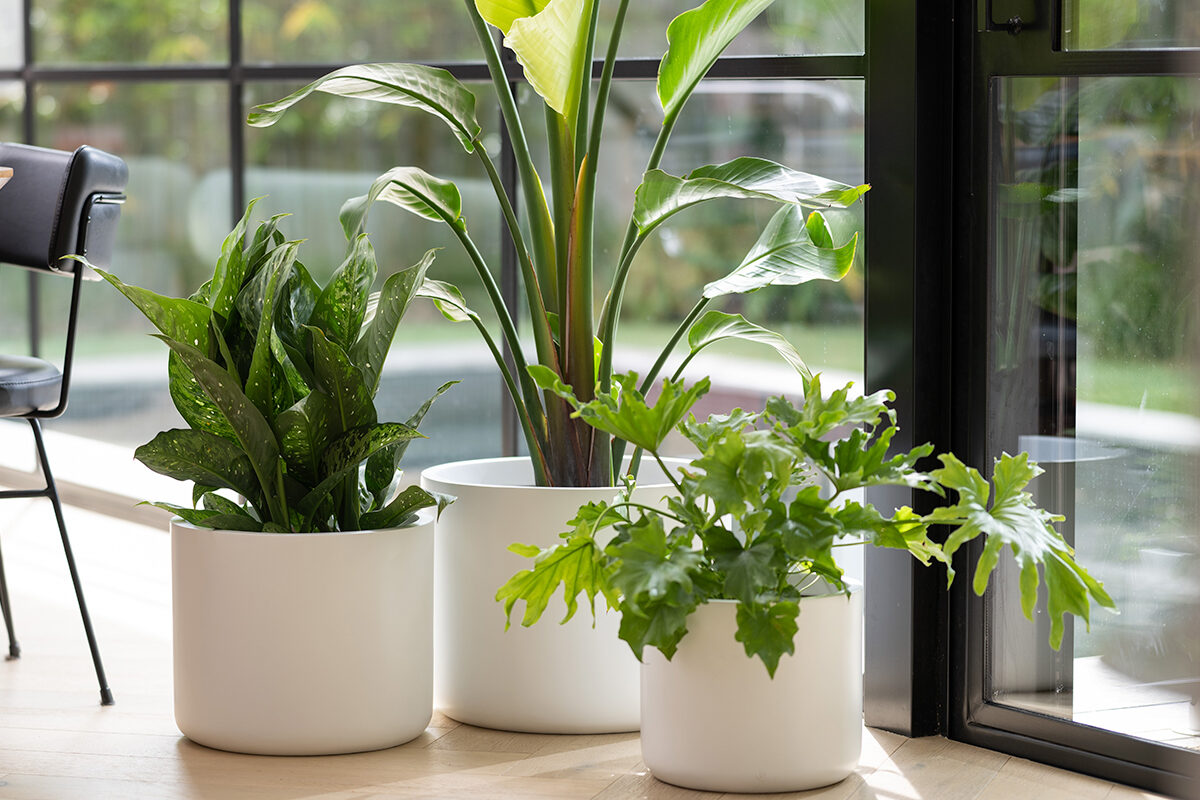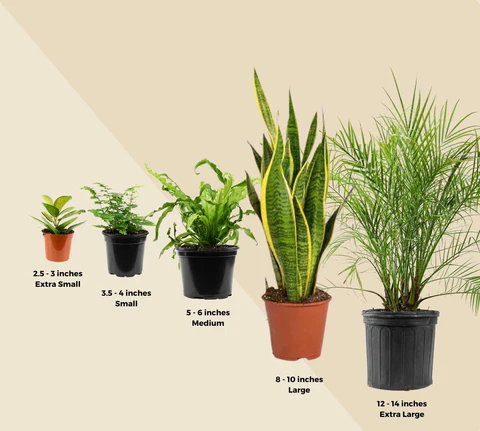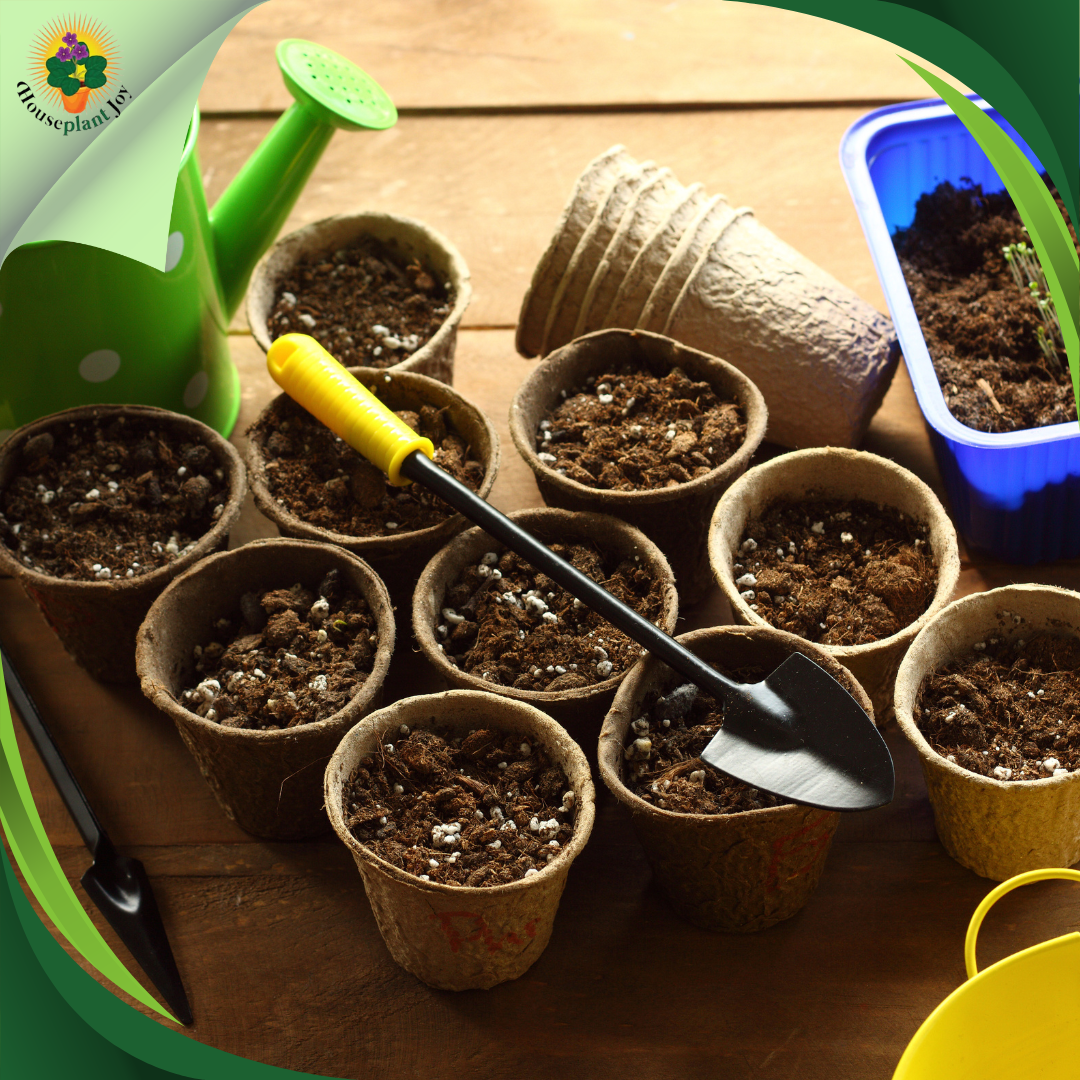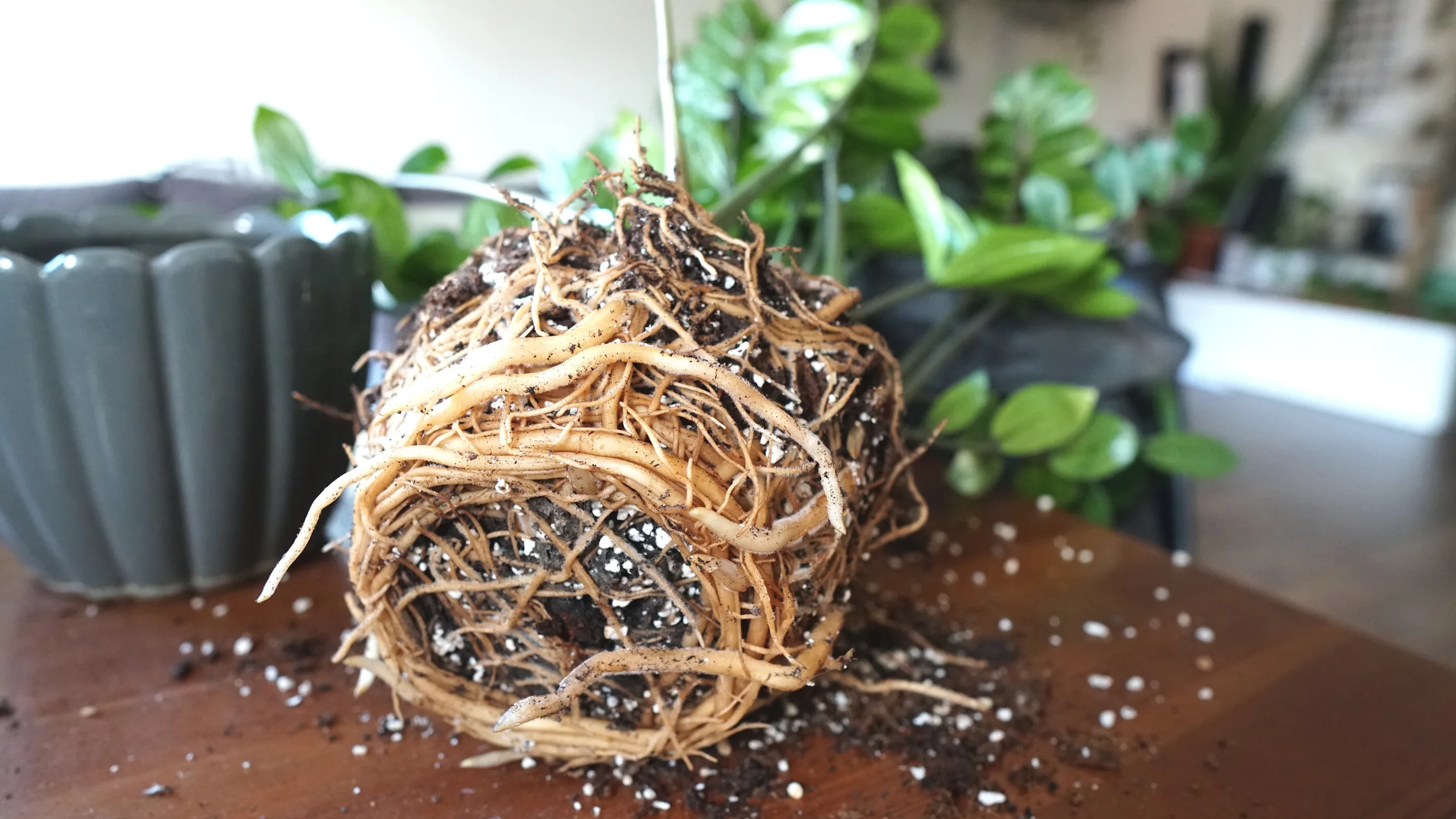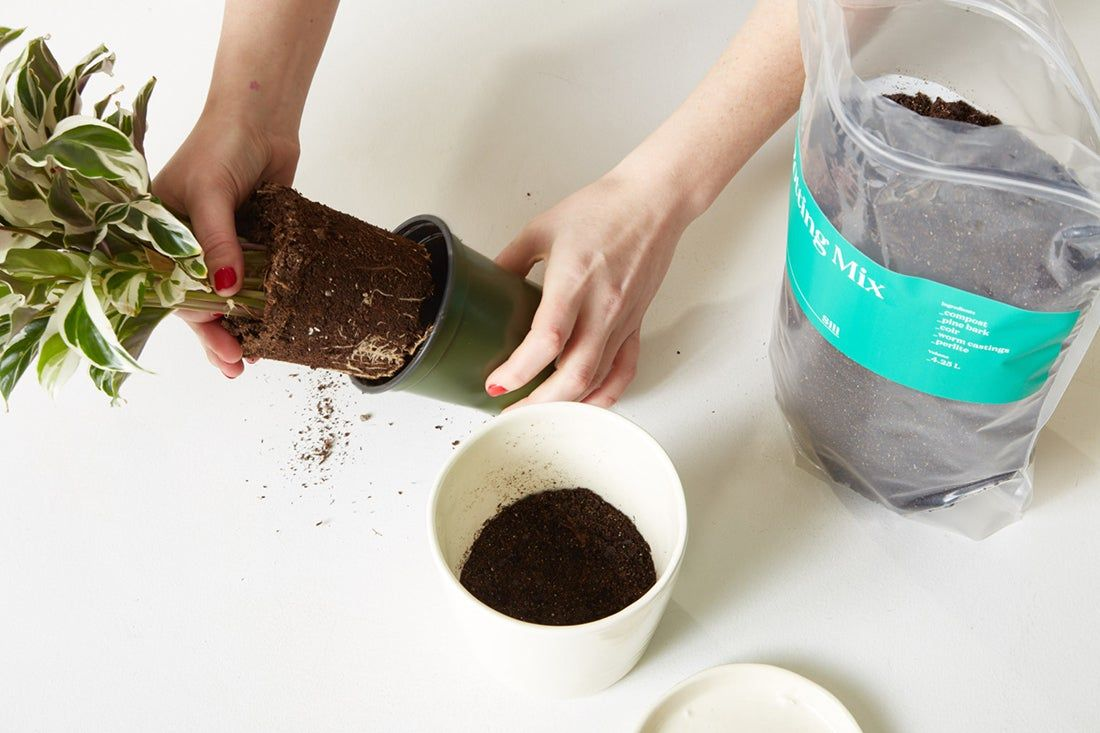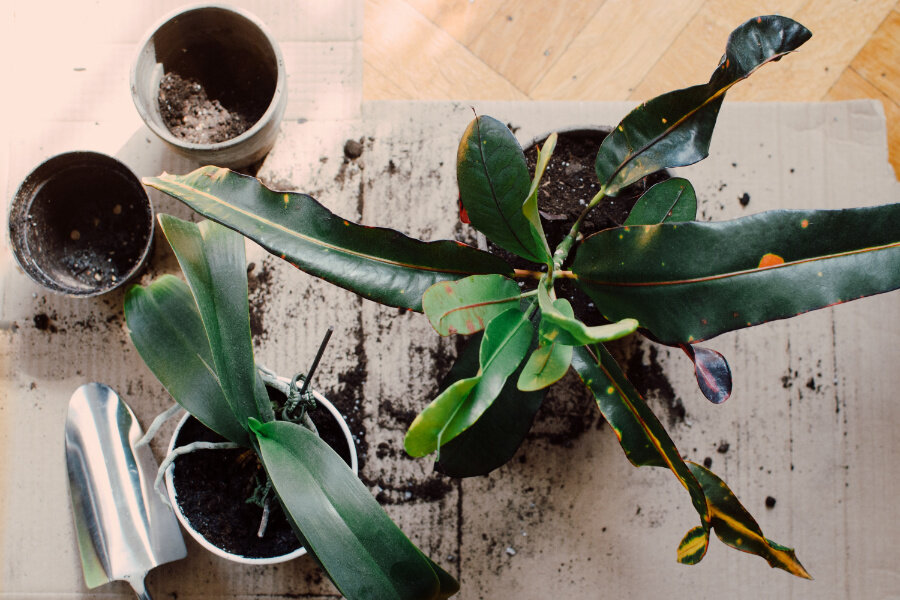HousePlantJoy is supported by our audience. When you purchase through one of our links, we may earn a small affiliate commission. As an Amazon Associate I earn from qualifying purchases. Your cost is not affected.
==================
Indoor Plant Pot Size is more important than you think. Finding the right pot size for your indoor plants might seem like a small detail, but it can make a big difference in their health and growth. Through my experience with indoor gardening, I’ve learned how choosing the perfect container ensures your plants have enough space for their roots to spread, promoting robust and vibrant growth. Let me share my knowledge and tips on picking the ideal pot size to keep your indoor garden flourishing.
Determining Plant Pot Size: Selecting the Right Container for Healthy Growth
Photo by: Urban Leaf
Choosing the pot size for your indoor plants is crucial for their health and growth. If the pot is too small, it can limit root development and nutrient absorption, which can lead to issues like stunted growth and increased susceptibility to disease.
A pot that’s too large can hold excessive water, leading to issues like root rot and other problems associated with overwatering. Therefore, choosing the appropriate indoor plant pot size involves finding a balance that supports healthy root development without causing stress to the plant.
Understanding the relationship between a plant and its pot goes beyond matching sizes. It involves considering the plant species, its growth rate, the pot’s material, and the environment it will live in.
A well-fitting pot is a comfortable home for the plant, providing the right space for roots to breathe and expand. It also functions functionally and supports the plant structurally and aesthetically, making it a seamless part of your living space decor.
Key Takeaways
- Pot size is crucial for indoor plants as it significantly impacts their health, growth dynamics, and lifespan.
- Consider the plant’s specific needs and characteristics when selecting the right pot for an indoor plant.
- Understanding standard pot sizes and their conversions between measurements is essential for choosing the appropriate size.
- Repotting is essential for maintaining plant health; indicators such as visible roots and watering issues signal when a plant needs a new container.
Plant Growth and Health
Indoor Plant Pot Size is crucial for accommodating a plant’s current and future growth. The size of the pot should fit both the current size of the plant and its future growth. If the pot is too small, it can cramp the plant’s roots, which leads to stunted growth and stress, making it more vulnerable to diseases and pests.
If the pot is too large for the plant, it can lead to waterlogging, which could cause root rot and other health issues. That’s why choosing the right indoor plant pot size is crucial for promoting healthy growth and ensuring your plants stay healthy.
Drainage and Aeration
Effective drainage and aeration are essential for healthy plant roots. Pots need proper drainage holes to prevent excess water pooling at the bottom. This ensures the soil is adequately aerated, preventing the roots from suffocating.
Moreover, the pot’s material, whether porous like clay or non-porous like plastic, also affects moisture levels and airflow.
Root Development
The root system requires space to expand and access nutrients. A correct pot size promotes robust root development, allowing the plant to anchor itself and absorb water and nutrients efficiently.
Containers that are too tight can lead to root-bound conditions, whereas oversized pots may cause roots to grow excessively in search of nutrients, leaving the plant undernourished.
Pot Material and Type
The material of the pot makes a big difference in how it retains water and affects temperature. Clay pots are porous, allowing for good air and water circulation, but they tend to dry out more quickly.
On the other hand, plastic pots are lightweight and hold onto moisture well, but they might not allow the soil to breathe as easily as clay. When deciding on a potting material, it’s important to consider how much water your plant needs. Also, make sure the pot has enough drainage holes to stop the soil from getting waterlogged.
Expected Growth Rate
A pot should give the plant enough space to grow comfortably. Plants that grow quickly need to be repotted more often, so it’s a good idea to start them off in a pot with extra room for growth.
A common practice is choosing a pot one to two inches larger than the plant’s root ball to accommodate this growth. For more tips on choosing pots that account for different growth rates, you can find further insights at Plant Care for Beginners.
Demystifying Standard Pot Sizes: A Guide to Conversions
Photo by: Simply Good Pots
Understanding standard pot sizes and how they convert between different measurements is essential when choosing a pot for your indoor plant. This ensures your plant has enough space to grow without oversizing, which can lead to issues with moisture.
Common Pot Dimensions
Indoor plant pots are available in standardized dimensions, usually corresponding to the pot’s diameter at the top. The sizes generally range from small, which starts around 2 inches, to large, which can be 14 inches or more.
- Small pots typically range from 4 to 6 inches.
- Medium pots often span from 7 to 10 inches.
Volume and Diameter Relationships
The size of a plant pot isn’t just about its diameter; it’s also about its volume, often measured in gallons. Here’s how pot diameter translates to volume:
- An 8-inch diameter pot is approximately equivalent to a 1-gallon pot.
Assessing the Current Pot
One should examine the current container to determine if a plant requires a new pot. If roots are visible through the drainage hole or the plant seems top-heavy and frequently tips over, it’s a clear sign the plant has outgrown the pot. It should also be noted whether the soil dries out too quickly, indicating limited space for moisture retention.
Selecting a Suitable Pot
When repotting, the new pot should usually be about two to three times larger than the current one. It’s best to avoid drastic increases in pot size because they can stress the plant.
Ensure the new pot has suitable drainage and is proportional to the plant’s height and weight to maintain stability and encourage even growth. The pot’s material also affects moisture regulation and temperature; materials like terracotta and unglazed ceramic are breathable, allowing for better air flow around the roots.
Determining Future Growth
Consider the plant’s growth rate to anticipate its future size. Fast-growing species will need more space sooner, so selecting a pot several inches larger in diameter will accommodate longer-term growth. However, a pot too large can lead to waterlogging and should be avoided. Responsive pot sizing supports healthy root development and plant vitality.
Preparation and Pot Selection
Before you start the repotting process, it’s important to assess the size of the plant’s root system and choose an appropriately sized pot.
A plant pot that’s too large can lead to waterlogging, while one that’s too small can restrict root development.
Drainage holes and a tray are crucial for ensuring adequate drainage in the new pot. Additionally, the repotting process recommends using high-quality potting soil.
Essential Steps for Transplanting Your Plants
The repotting process should be gentle to minimize stress on the plant:
- Take the plant out by holding it at the base and turning the pot upside down.
- Inspect and trim any roots that are dead or excessively long.
- Untangle circling roots to encourage outward growth.
Aftercare and Maintenance
After repotting, plants need proper aftercare to thrive:
- Give the plant a good watering, and make sure any extra water drains out of the pot.
- Monitor the moisture level of the new soil, as it may dry out differently than the old soil.
Overpotting and Its Effects
Overpotting happens when a plant is placed in a pot much larger than its current root ball. This can lead to problems like excess soil moisture because the large volume of soil retains water for longer periods, potentially causing root rot. To avoid this issue, plants should generally be placed in a pot that is only 2-3 inches larger in diameter than their root ball.
Indoor Plant Pot Sizes for Healthy Growth
Choosing the perfect indoor plant pot size ensures healthy growth and overall plant well-being. The size of the pot directly impacts root health, water retention, and the plant’s ability to thrive. Through my experience in indoor gardening, I’ve learned that selecting the right container gives plants enough space for their roots to spread, promoting robust and vibrant growth. When selecting a pot size, it’s important to consider factors like plant species, growth rate, pot material, and environmental conditions.
Balance is important for supporting healthy root development without stressing the plant. It’s also important to ensure the pot has good drainage and is made from the right material to maintain the soil moisture and root airflow.
By following these guidelines and regularly assessing your plant’s size and health, you can ensure it has the right conditions to thrive and become a vibrant part of your indoor space.
How Do I Choose the Right Size Pot for My Indoor Plant?
What is the Recommended Pot Size for a Plant of a Certain Height?
What Size Container is Best for Accommodating a Small Tree Indoors?
Why Should You Join Us?
Get insider secrets: Unearth the best-kept tips to keep your plants thriving and blooming like never before.
Expert Advice: Gain access to our team on Facebook, Twitter, and other social media channels, and meet our gardening experts eager to help you on your plant journey.
Engage With Like-Minded Souls: Connect with fellow plant lovers, exchange stories, and build a supportive community. Join us today! Follow Houseplant Joy on Facebook, Instagram, and Twitter for daily inspiration and a blooming good time! #HouseplantJoy #GreenThumbsUnite #HouseplantLove

